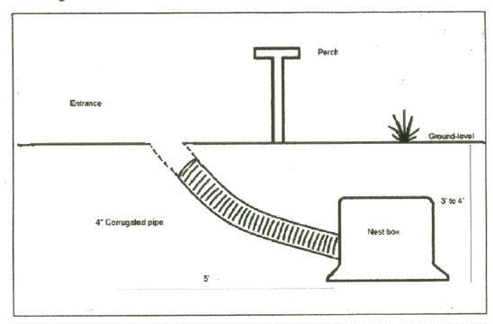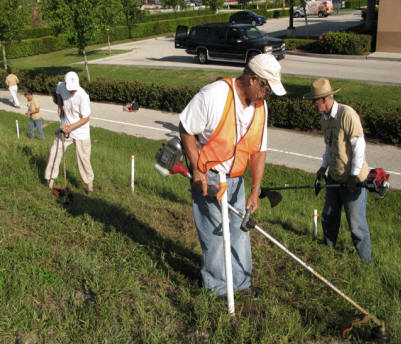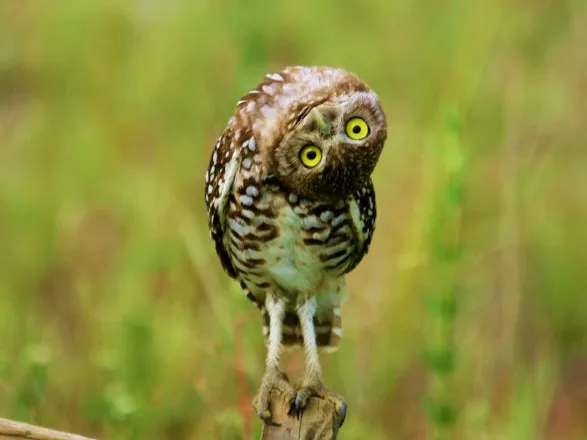Digging a Starter Burrow
As Cape Coral grows, there will be less and less empty lots for the Burrowing Owls to call home, and loss of habitat is a primary reason why Burrowing Owl populations decline. Fortunately there is a solution to habitat loss that is working quite well. Homeowners are being encouraged to put “starter” burrows on their front lawns.
Burrowing Owls are not able to dig through the tough grass we have on our lawns, so a starter burrow can be installed to encourage a Burrowing Owl to move on to your property.
- Start an entrance simply by digging a hole 8-12 inches deep with a hand trowel or small shovel at a 45 degree angle.
- Pile the dirt you dig out just outside the hole.
- Install a wooden T-perch to get the owls attention.
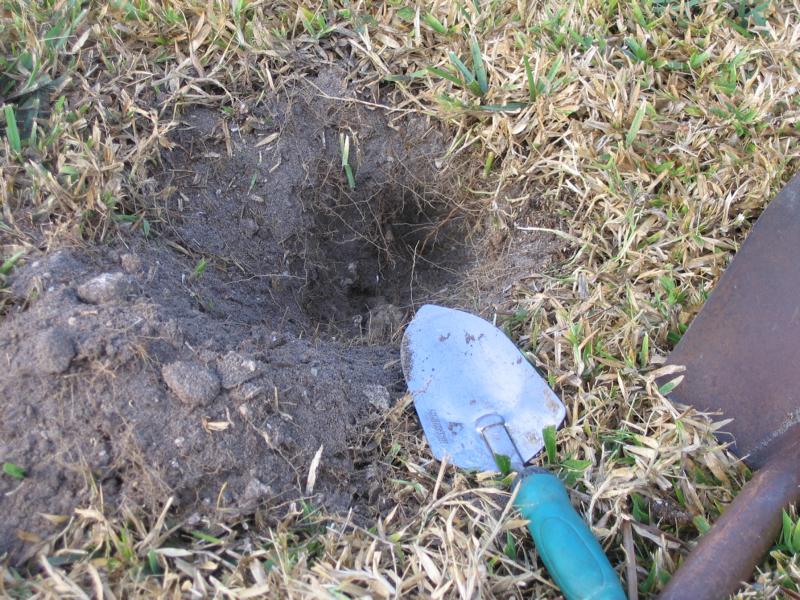
Starter Burrow
Select an open lawn area that is located:
- Between the drainage swale and the front of the house (best location) or in a backyard (least desirable location)
- In an area safe from pets
- In an open lawn area away from trees, shrubs and buildings
- Avoid areas that are prone to flooding
Alert your lawn care technician so they can avoid using riding lawn mowers too close to the burrow.
The most important consideration before installing a starter burrow is what chemicals you use on your yard. No pesticides or herbicides can be used on starter burrow yards. This prohibition includes rat poison for rodent control. Many owls, eagles, and other predators die from eating a poisoned rodent. The owls are Mother Nature’s pest control!
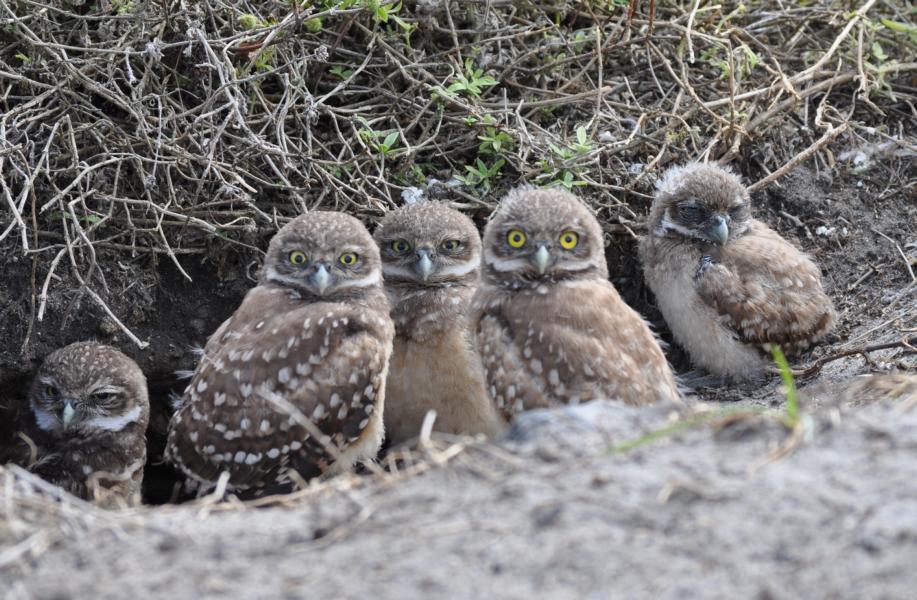
More About Nest Selection
Baby owls born during the past nesting season are “kicked out” of their parents’ nests and they are looking for homes of their own starting in the fall months. People who have been to the library know that property surrounding the building is home to quite a few owl burrows already. But more nests on developed property are needed today and in the immediate future if people want to help Burrowing Owls to continue to thrive in Cape Coral.
In addition to young owls leaving their parent’s nests, adult owls have lost access to nests that have been crushed or become clogged up as the result of heavy rains and clean-up efforts. And, rapid development in Cape Coral also is leading to the destruction of owl burrows/nests when nesting season is over.![]()
Developers cannot destroy inhabited burrows during nesting season, and they must obtain the appropriate permits and guidelines to take a burrow. Nevertheless, existing nests, especially those on vacant lots, are quickly decreasing in number across Cape Coral. As a result, many owls are living in new construction homes, on window sills or underneath thick shrubs. While they do not need a burrow to live, they do need them to breed.
Burrowing Owl nesting season runs from February to July.
Burrow maintenance is also critical. Though the owls like a little bit of vegetation to provide them with shade and cover and a fertile hunting ground, owls will abandon nests that become overgrown with grass and weeds. The City of Cape Coral does not maintain owl burrows. This chore is done by a handful of volunteers, who, no matter how hard they try, can not possibly maintain every burrow in the city. When in the field maintaining burrows, CCFW members do their best to recruit people who live near a nest to adopt the nest and care for it going forward.![]()
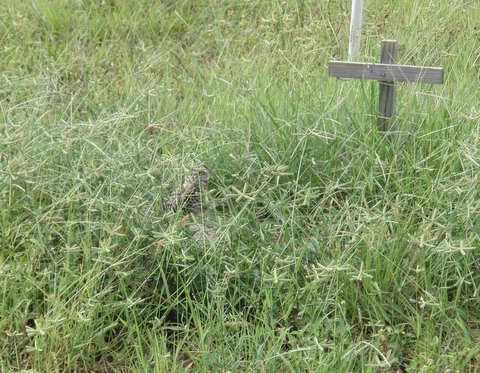
Overgrown Burrow
Additional Resources
How to Make a Burrowing Owl's Nest
The News-Press explains how Cape Coral’s beloved burrowing owls make their homes underground—and how you can build a safe nesting site to support them. Watch the full guide to learn more about these iconic city birds.
Burrow Maintenance Program
Join our team of volunteers performing maintenance around owl burrows to help one these lovable creatures thrive.
Adopt an Owl
Adopt a Cape Coral Burrowing Owl to help fund burrow maintenance activities and other programs.
General Meetings
View more information about our general meetings and upcoming guest speakers.

